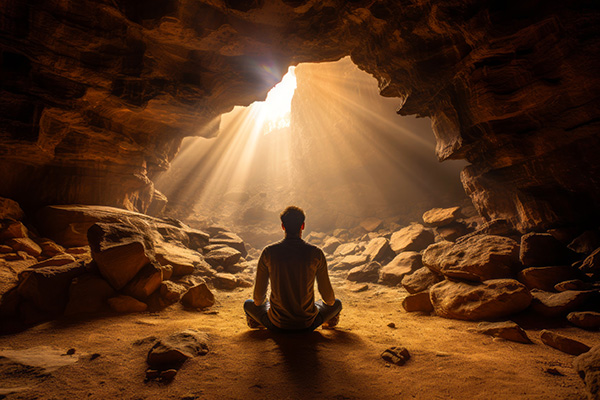emotions
The Magicless Misery Of ‘Compare And Despair’
 I once attended a Toastmasters meeting where a gentleman was delivering his first speech to this specific group. It was an ice breaker to have us get acquainted with him. Instead of the typical short autobiographical introduction this speaker chose to give us an overview of his philosophy of life.
I once attended a Toastmasters meeting where a gentleman was delivering his first speech to this specific group. It was an ice breaker to have us get acquainted with him. Instead of the typical short autobiographical introduction this speaker chose to give us an overview of his philosophy of life.
He told his audience that he sees himself entering a new phase of his life right now. He spoke about how important it is to get to know yourself and to take care of yourself first and foremost, and to always live in the moment.
After the speech and applause, the toastmaster reflected briefly on what the talk meant to him as he had listened. He said it reminded him of a mentor who had once, many years ago, said to him, “Compare… and despair”. If in life you are constantly comparing yourself to others, or comparing what you have with what others have, or what you feel you lack, or need to achieve, then all that will do is bring yourself unnecessary despair.
The only thing you should ever compare yourself against, his mentor added, is yesterday. Today did you do something constructive or grow in some way that makes you a better person than you were yesterday?
Too often we compare ourselves with our peers, both in our personal and professional lives. Why did he get a raise and not me? Why can I not find a soulmate like she did? Why can’t I be a successful entrepreneur like him? How come they get to have all these wonderful vacations?
False Education Appearing Real (F.E.A.R)
 I love the acronym F.E.A.R. (False Education Appearing Real) since we all have people, circumstances, phobias and so forth, that can put us into that space.
I love the acronym F.E.A.R. (False Education Appearing Real) since we all have people, circumstances, phobias and so forth, that can put us into that space.
Fear is an instance of emotion that is triggered by the awareness, or anticipation of danger. It can also become a state of being. Excluding clinical fears, needing professional help, there are many fears we simply impose upon ourselves as a result of life experiences.
One of my fears is acrophobia, the fear of heights. When I get within five feet from the edge of a rooftop, I begin to shake.
Climbing 30 foot ladders has me nervous and when I hiked to the pinnacle of the mountain of Macchu Picchu in 2004, I could not take those last six nervous steps onto the plateau pinnacle rock. This was partly being due to a few other tourists already sharing the rock… and I am a little “accident prone.”
Although I was invited by my partner and the guide, I leaned against the rock debating my fear, shaking a little at the prospect and wishing that I could take those final steps, as I might regret it after I hiked down. Part of me did regret not taking those last steps when we got back to the base.
Yet, a bigger part of me knew I had to acknowledge the feelings in the moment, and since I am not a regular exerciser, I already had accomplished something tremendous by taking the hike to the top and back down the back side of the mountain. On the way I enjoyed the magnificent views and spiritual energy for several hours. Continue reading
How To Be Mindful On The Go!
 To some individuals, being mindful while on the go might seem a contradiction in itself. However, the truth of the matter is that there are a plethora of ways to cultivate the art of mindfulness that do not involve simply sitting still.
To some individuals, being mindful while on the go might seem a contradiction in itself. However, the truth of the matter is that there are a plethora of ways to cultivate the art of mindfulness that do not involve simply sitting still.
People turn to mindfulness for many reasons. For example, they may have a medical condition that needs managing, work issues that require resolving, or just simply want to feel more present in their everyday lives.
With the pace of modern life, it is clear to see why people become easily distracted and lead somewhat complicated lives as a result – all of which can be both emotionally and physically draining.
Whatever the reasons may be as to why a person turns to mindfulness, it should, indeed, help them to create a more balanced lifestyle.
That said, mindfulness should not be seen as a magical cure-all, but more an efficient way of relating to personal issues differently.
Interestingly, research has revealed that physiological changes do actually take place within an individual practicing mindfulness meditation. Such changes occur within the brain and some people experience better blood pressure and an enhanced immune system.
The above said, even those among us who practice mindfulness faithfully, can find it somewhat challenging to take what we have learned and incorporate it into our everyday lives. Instead, we tend to allow ourselves to be distracted and develop automatic behavior patterns instead.
The Difference Between Emotion And Intuition
 Clients sometimes tell me during psychic readings, “I just have this gut feeling,” or “I don’t know, but something about this seems off.” I love when people say things like this. It means they are noticing the whispers of their inner guidance system. They may not yet have the confidence to fully trust it, but they’ve taken the first step to becoming more aware of whispers of their highers self, asking to be heard.
Clients sometimes tell me during psychic readings, “I just have this gut feeling,” or “I don’t know, but something about this seems off.” I love when people say things like this. It means they are noticing the whispers of their inner guidance system. They may not yet have the confidence to fully trust it, but they’ve taken the first step to becoming more aware of whispers of their highers self, asking to be heard.
The challenge comes when we try to sort out whether that “feeling” we have is an actual intuitive nudge or just an emotion bubbling up from our human experience. From a spiritual perspective, emotions and intuitions are not the same thing. Both are important, but they function very differently.
When you can tell them apart, you can make decisions with greater clarity, avoid unnecessary drama, and walk more confidently along your spiritual path.
Emotions and intuitions may seem similar because they both arise within us without a clear explanation. However, emotions are usually connected to our human reactions. They can be triggered by what’s happening around us, our personal beliefs, or our physical state. As any expert drama queen can confirm, they can sometimes be big, loud, colorful, and full of urgency!
Intuition, on the other hand, is usually quiet, calm, and strangely neutral. Even the most powerful intuitive messages can be completely free of emotion. They carry a simple clarity that doesn’t shout or demand, but simply is. In fact, these emotion-free intuitive hits are often the most accurate and meaningful, because they’re not wrapped up in temporary moods and personal biases.
What To Do When He Disappears Into His Cave
 He tells you he loves you, wants to be with you all the time, and can’t get enough of you. He calls and texts you constantly, and you feel like you’ve found the perfect relationship. You love the way he makes you feel. He must be “the one.”
He tells you he loves you, wants to be with you all the time, and can’t get enough of you. He calls and texts you constantly, and you feel like you’ve found the perfect relationship. You love the way he makes you feel. He must be “the one.”
Then, suddenly, he’s gone. No calls, no texts, no dates, nothing. Ghosted.
And you’re left wondering: What happened? Where did he go? Was it something I said, or did?
Well, no. He just retreated into his “cave.” It is where your man goes to think, breathe, and figure out what’s going on in his head.
This is the mysterious and often frustrating time-out that men often take when they realize things are moving too fast, or when they start to feel deeply attached.
For us women, especially those who are spiritually aware and emotionally intuitive, this sudden withdrawal can be very confusing and even painful.
Women tend to thrive on connection and open communication, and we naturally want to nurture and support others. So, when the man we care about suddenly becomes distant, it can trigger our deepest fears of abandonment or rejection.
But here’s what you need to understand: his retreat is not about you.
Trust Your Gut First, Your Heart Second
 How do you know that what you are doing is for your highest good? How do you know if what you want out of life is based on your own desires, or if it has been placed there to be achieved by the Universe?
How do you know that what you are doing is for your highest good? How do you know if what you want out of life is based on your own desires, or if it has been placed there to be achieved by the Universe?
Everyone has a higher purpose in this lifetime and yet many never seek it out or achieve it because the ego starts to become more prominent in their lives instead of their higher self.
When you were born, a deep-seeded life calling was placed within you. As children, we were able to tap into it, always knowing that we wanted to be a fireman, a policeman, a doctor, an astronaut, an artist, a lawyer, a dancer, a scientist, or a princess. Some of us just wanted to help others, even at a very young age. We would be kind, caring, and giving to other people, whether they were children, adults, or seniors.
Unfortunately, this energy has been buried over time by the society and culture we live in – whether it be teachers, parents or mentors.
Has anyone ever laughed at you when you told them what you wanted to do or be? Did someone say, “Go back and think about that, because that will never happen”? Each of us has a different story as to why we do or do not achieve our passion and purpose in life.
Today is the day to decide, “I will achieve my dreams as long as they come from spirit and are for my highest good.
